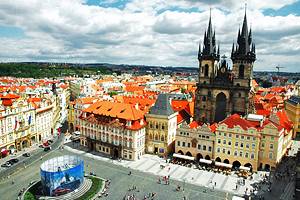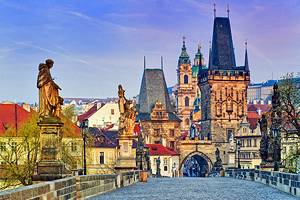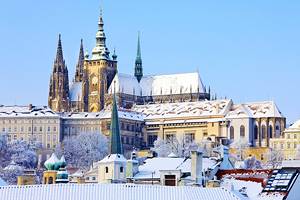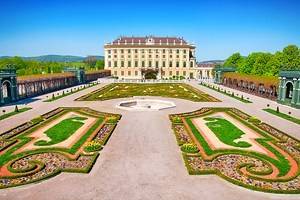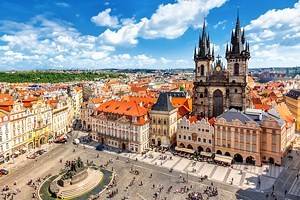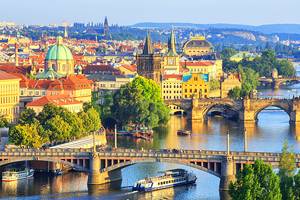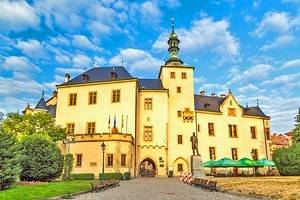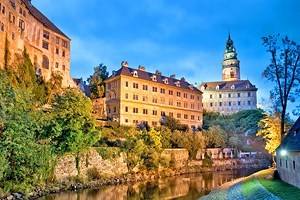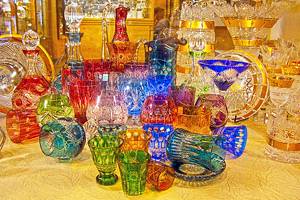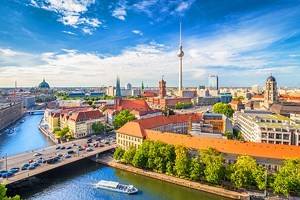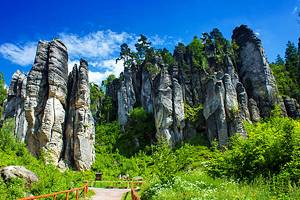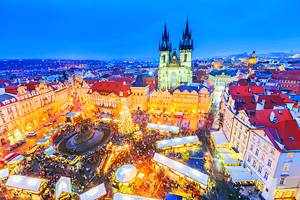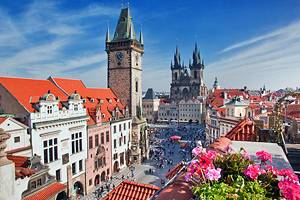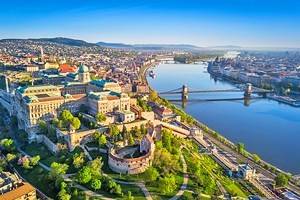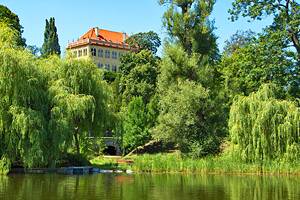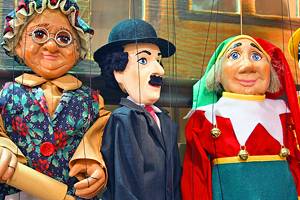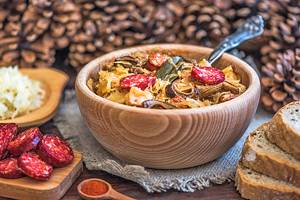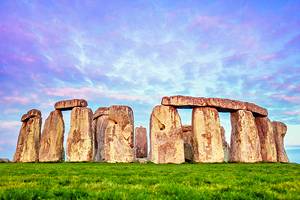Visiting Prague Castle: Attractions
Within the walls of Prague Castle (Pražský hrad), one of the most important UNESCO World Heritage Sites in the Czech Republic, are some of the city's most visited attractions. In addition to the old fortifications, tourists can view old cathedrals and churches, historic towers and gatehouses, as well as splendid royal palaces and their gardens.
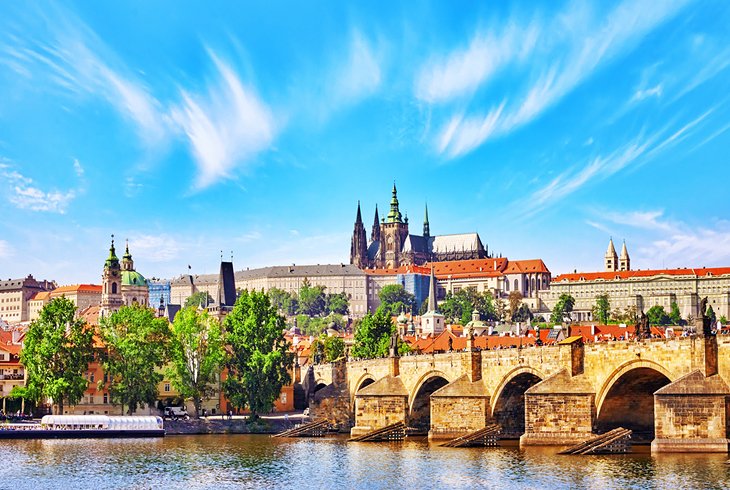
Once home to Bohemian kings and now the official presidential residence, the castle has changed a great deal since the construction of its original fortifications in the 10th century and as a result contains many different architectural styles.
Acknowledged by the Guinness Book of Records as the largest ancient castle in the world - it measures 570 meters in length and averages 130 meters in width - Prague castle can take a fair amount of time to walk around, and its sheer size is intimidating. One way to see the highlights and learn about the castle's long history is to join a tour with an expert guide.
Other top things to do at Prague Castle include taking in the magnificent views over the Vltava River and the Charles Bridge, along with the Old City center of Prague with its many lovely church spires. For a truly magical experience, try to catch a glimpse of these same views of Prague Castle at night or in winter. Find more ideas on the best things to do, with our list of the top attractions, tips, and tours at Prague Castle.
The Old Royal Palace and the Vladislav Hall
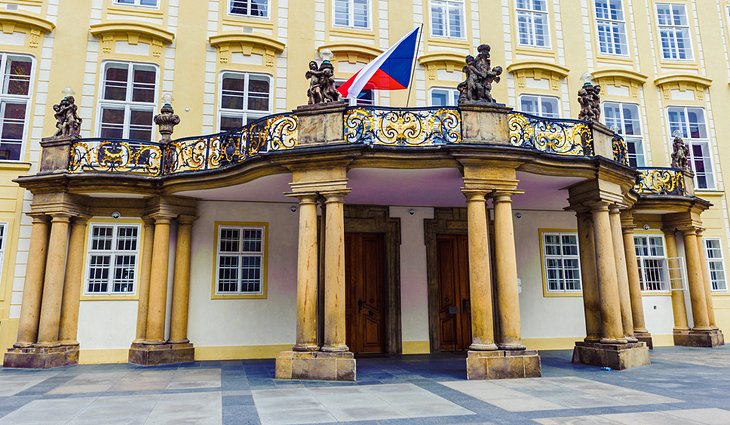
The Old Royal Palace (Starý Královský Palác) is one of the most interesting of all Prague's many historic buildings. Although dating back to the 9th century, the current building can trace its roots to the 14th century, when Emperor Charles IV had a Gothic palace built for state functions. Further extensions were added by his son, Wenceslas.
The most interesting part of the palace is the magnificent 16th-century Vladislav Hall, a massive structure used for coronations, banquets, markets, and even jousting tournaments. An Observation Gallery overlooks the palace gardens, and the splendid Riders' Staircase was built wide enough to allow knights participating in the tournaments to enter the hall on horseback. The hall is still used for state functions, so check ahead for any potential closures.
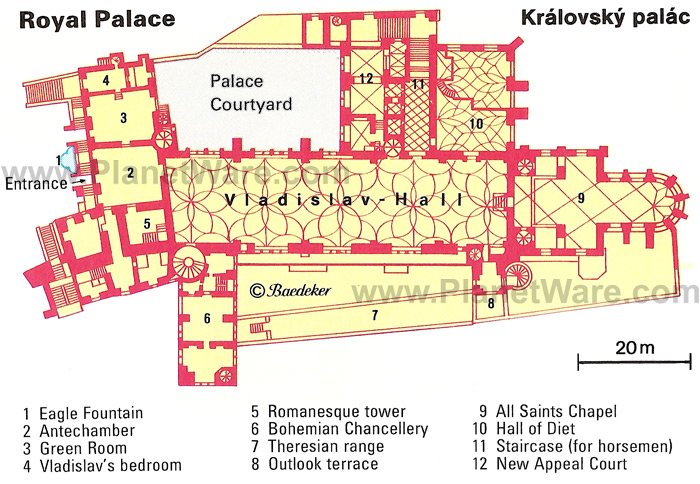
St. Vitus Cathedral
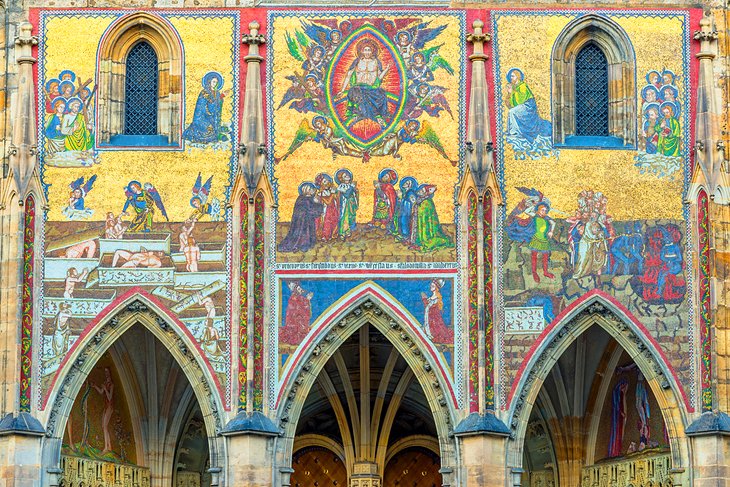
The Czech Republic's largest Christian building, the Roman Catholic St. Vitus Cathedral (Katedrala St. Vita) is the seat of the Archbishop of Prague and contains the burial tombs of many important saints and Bohemian kings. Founded on the site of a Romanesque rotunda built in AD 925, St. Vitus was begun in 1344, but due to interruptions by wars and plagues, it took more than 525 years to complete.
As a result, its architecture is an eclectic mix of styles, including elements of modern Neo-Gothic and 14th-century Gothic, with a sprinkling of Baroque and Renaissance influences.
Among its most interesting interior features are the stunning stained glass windows depicting the Holy Trinity, The Last Judgment, and a splendid mosaic from 1370 above the Golden Portal. Another highlight is the exquisite St. Wenceslas Chapel (Svatováclavská kaple), with its jewel-encrusted altar, as well as numerous paintings dating from the 14th to 16th centuries.
Also worth visiting is the Treasury, one of the richest such collections in Europe, with many priceless artifacts dating back as far as the Middle Ages. (Editor's Note: For mass times, check the Prague Castle official website below.)
The almost 100-meter-high Great South Tower of the cathedral is a must-see, too. Climb the 280 steps to the top to find seven massive bells, including Zikmund, the largest bell in the country. When it comes to views, it doesn't get much better than the top of the tower either - you'll be able to see the castle grounds plus much of Prague beyond.
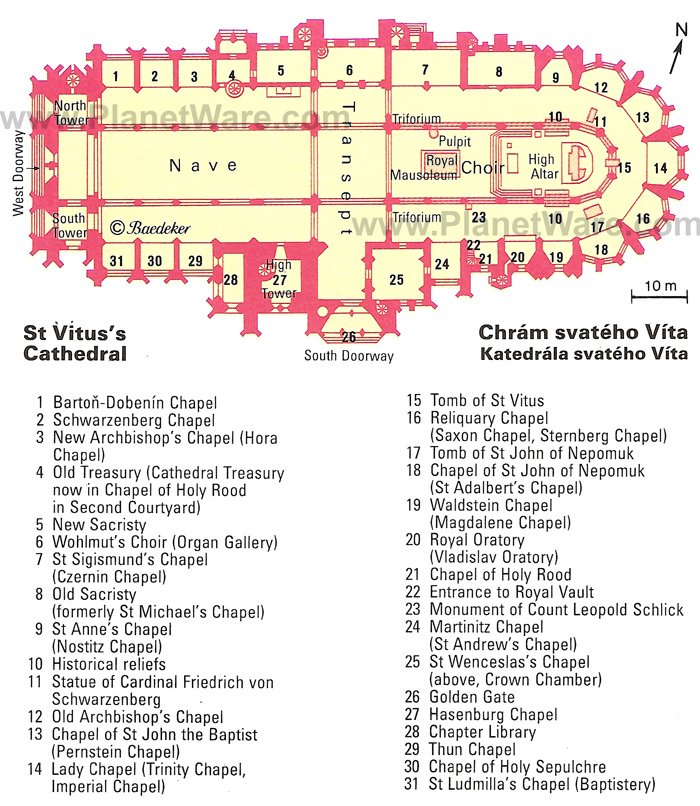
The Story of Prague Castle
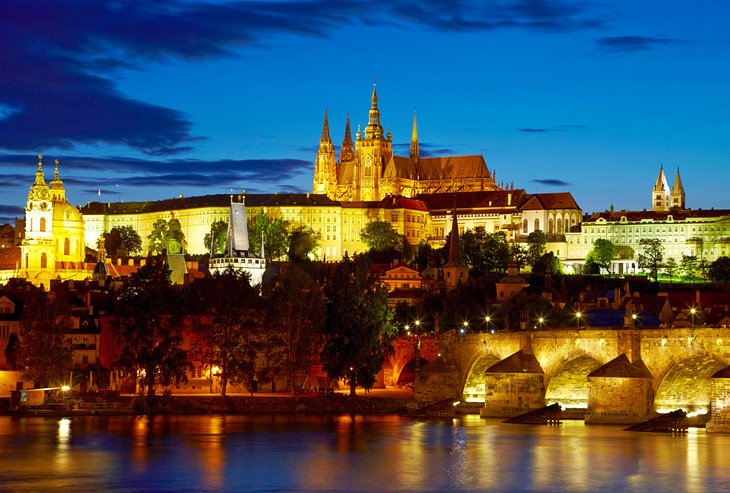
Telling the castle's history through superb displays and exhibits, the Story of Prague Castle is a must-see when visiting the Old Royal Palace. In addition to detailing the castle's rich 1,000-year history, this permanent exhibit deals with the fascinating history of the Czech people themselves.
This includes those who helped shaped the nation's history (for good and for bad), from ancient kings and courtiers to famous artists and writers, as well as the tradesmen who built the city and the servants who served in the castle. Other highlights include displays and artifacts related to the Czech crown jewels and the treasures of St. Vitus Cathedral.
The Prague Castle Picture Gallery
Art lovers won't want to miss the excellent Prague Castle Picture Gallery (Obrazárna Pražského hradu), home to an important collection of artwork started by Emperor Rudolph II in the 16th century.
Included among the more than 100 paintings on display from the castle's collection of over 4,000 works are important pieces by Hans von Aachen, Peter Paul Rubens, and Tiziano Vecelli. Much of the current collection dates from the 17th century and comprises major works by Italian, German, Dutch, and Flemish artists, along with Czech masters from the Baroque period.
The Basilica of St. George
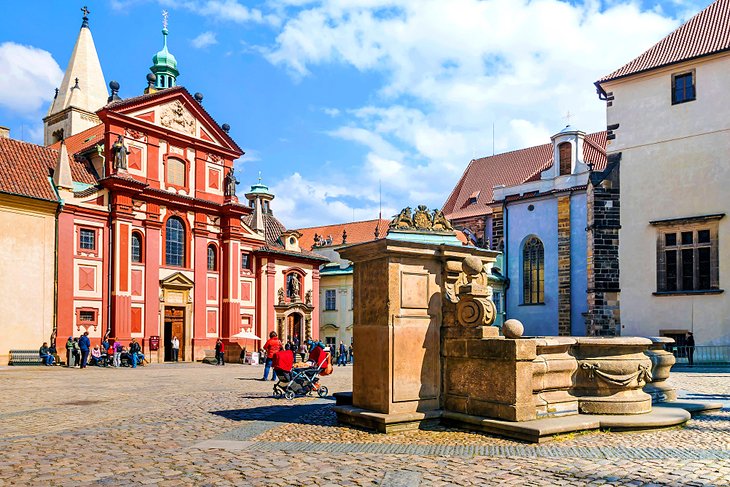
Despite many renovations and alterations over the centuries, the Basilica of St. George (Bazilika sv Jiri) - the oldest religious structure in the castle complex - has managed to retain its attractive Romanesque form.
While there's been a church on this site since the early 10th century, the current structure with its twin towers dates to the mid-12th century, while its fine façade was added in the 17th century.
Highlights include the tombs of Vlatislav I, who died in AD 921; Duke Boleslav II, who died in AD 999; and St. Ludmila, the wife of Duke Borivoj and first female Czech saint.
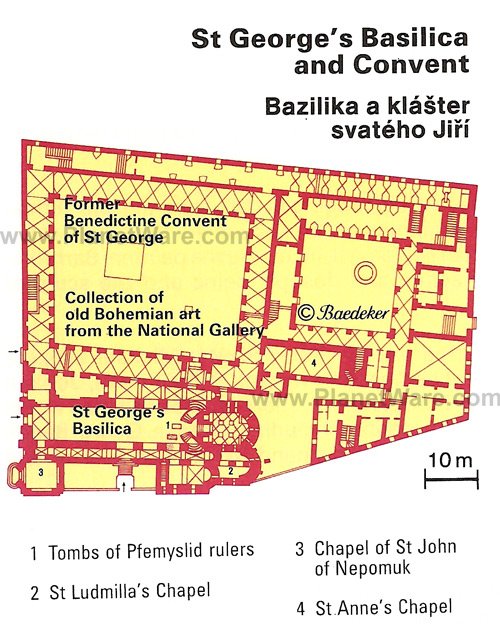
The Golden Lane
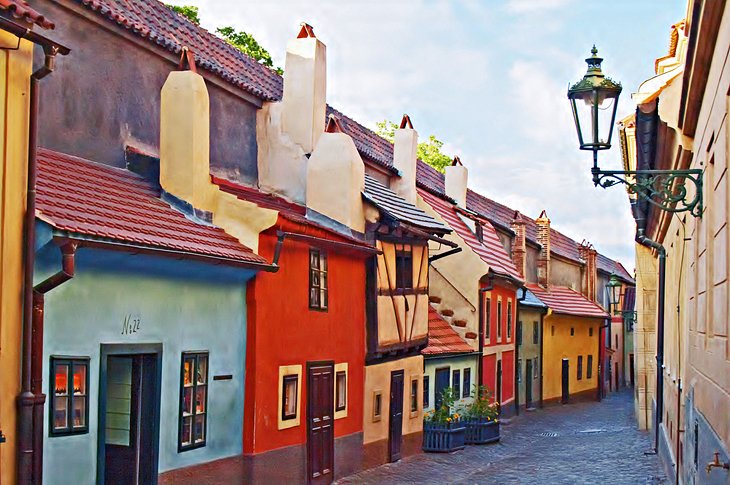
Originally a laneway of goldsmiths shops that once served Prague Castle, the Golden Lane (Zlatá ulicka) is the most charming place to visit within the castle grounds. One of the finest collections of traditional medieval buildings in the Czech Republic, this street has changed little over the course of centuries.
Eleven of these old buildings have survived intact and now house interesting displays of armor and textiles, scenes showing medieval life, and shops selling local crafts.
Of particular interest to literature fans is #22, once the home of Franz Kafka's sister, and where the author wrote for a period of time. The Golden Lane dates back to the 15th century, when a new wall was added outside the existing wall of the Prague Castle complex.
Queen Anne's Summer Palace
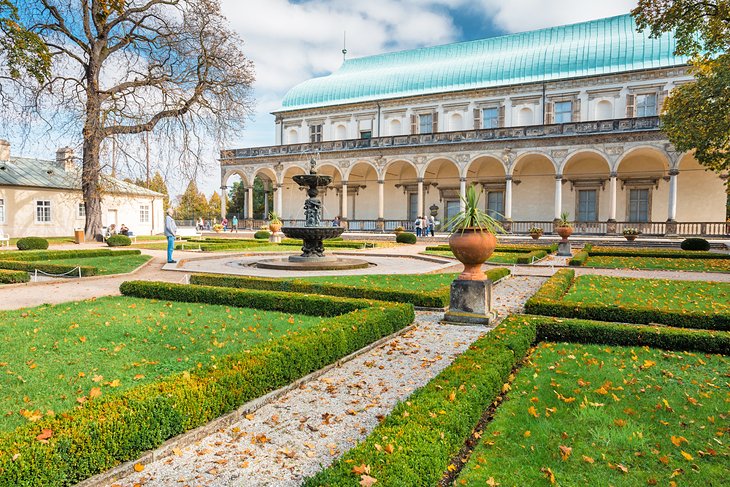
Built in 1560 by Ferdinand I as a gift for his wife, Anne, the Royal Summer Palace - often now referred to as "Queen Anne's Summer Palace" (Letohrádek královny Anny) - was constructed by Italy's leading stonemasons. It is famous for a number of features, most notably its fine arcade and exquisite relief decoration, as well as its unique roof.
Designed to host events and court entertainments, it later served as an army barracks before being renovated in the late 19th century when its monumental staircase was added, along with wall paintings depicting important scenes from Czech history. Although now used mostly for art and craft exhibitions, it's well worth a visit for its splendid décor.
The Riding School and Imperial Stables
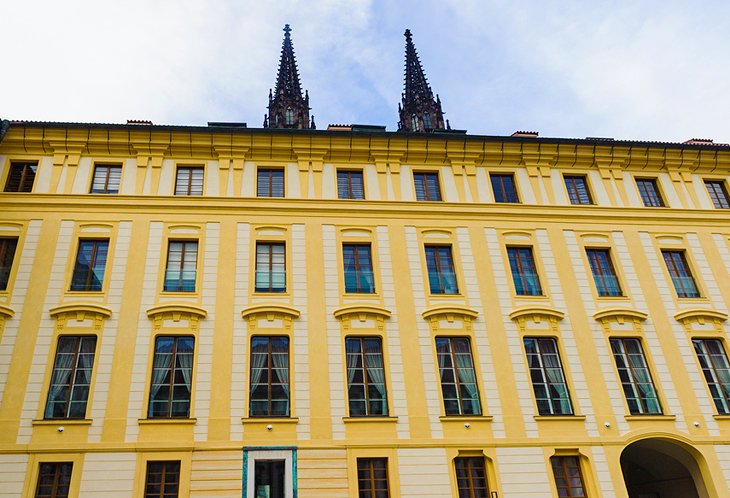
Built in the late 17th century in Baroque style, the huge façade of Prague Castle's Riding School occupies nearly an entire side of the street running up to Prague Castle. Although now serving as an exhibition hall, it's notable for its pleasant design and expansive roof garden with fine views of St.Vitus Cathedral.
Also serving as an exhibition hall and the home of the Prague Castle Picture Gallery, the former royal stables also present an imposing sight.
The Royal Garden
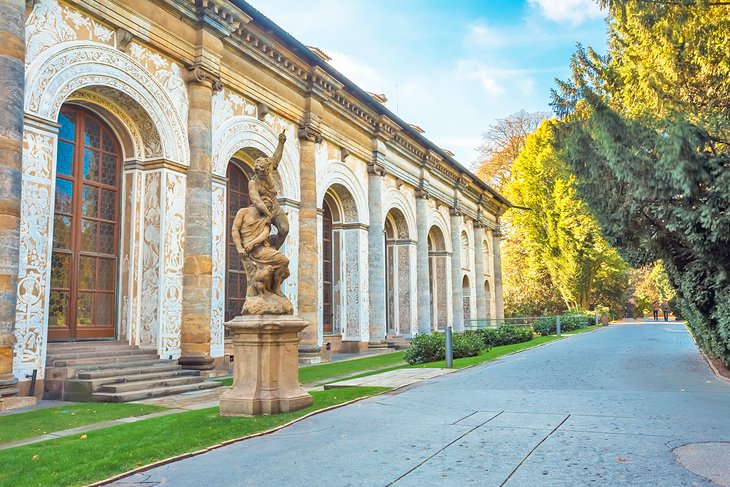
Ferdinand I had this fine example of a Renaissance garden added in 1534. In addition to its many flowerbeds and lawns, the Royal Garden (Královská zahrada) incorporates a variety of interesting buildings, including the Ball Game Pavilion; the Lion's Court; and the Royal Summer House, with its fascinating bronze Singing Fountain, created in 1568 and notable for the fact that its dropping water sounds like the ringing of bells.
Over the years, numerous exotic plants were added, and today the garden is a mixture of Renaissance and Baroque elements laid out in an English style. The Royal Garden is a pleasant place to walk, particularly in spring when its flowerbeds burst with color.
Other gardens worth exploring are the Southern Gardens, part of an excellent circular tour around the castle; the Paradise Gardens, dating back to the 1550s; and the Garden on the Ramparts, part of a natural park beneath the southern face of the castle.
An almost secret garden area that many visitors miss is the Stag Moat, which once served as part of the castle's natural defenses. A large green area that in the 17th century was populated by deer, the moat offers a beautiful footpath lined with statues, plenty of greenery, and some of the best views of the castle. You can access the Stag Moat from the Royal Garden or Queen Anne's Summer Palace.
Address
- 119 08 Praha 1


